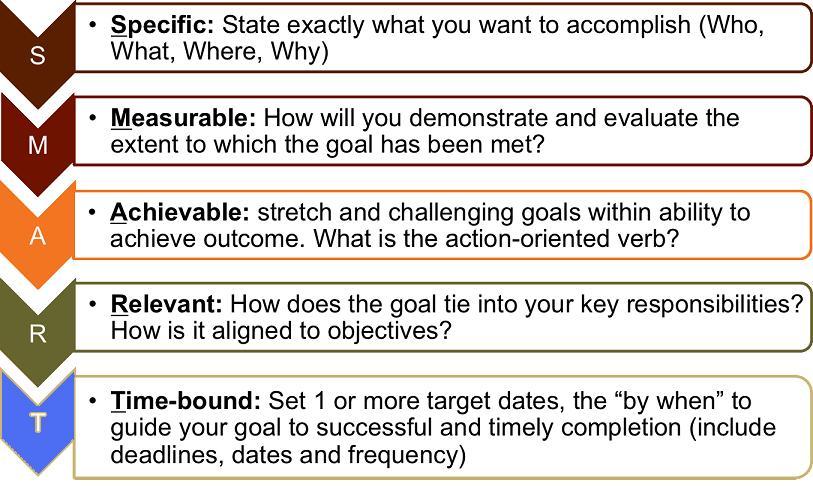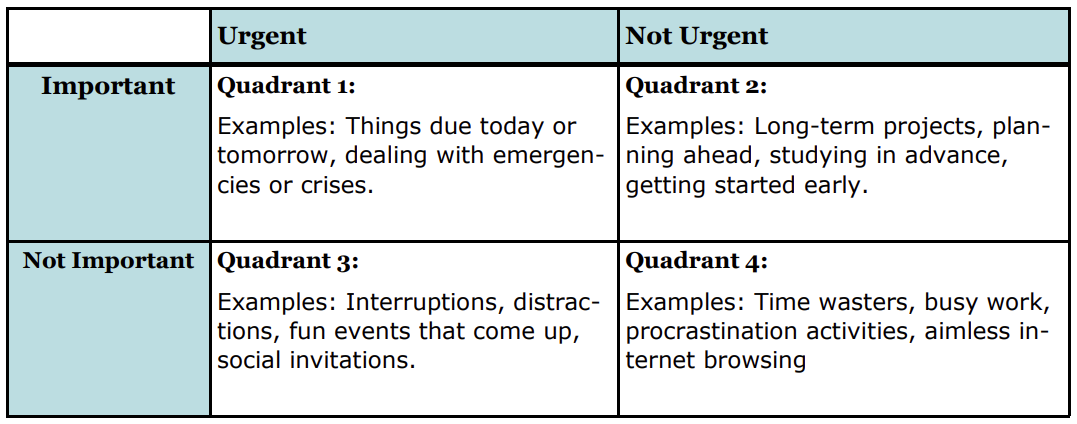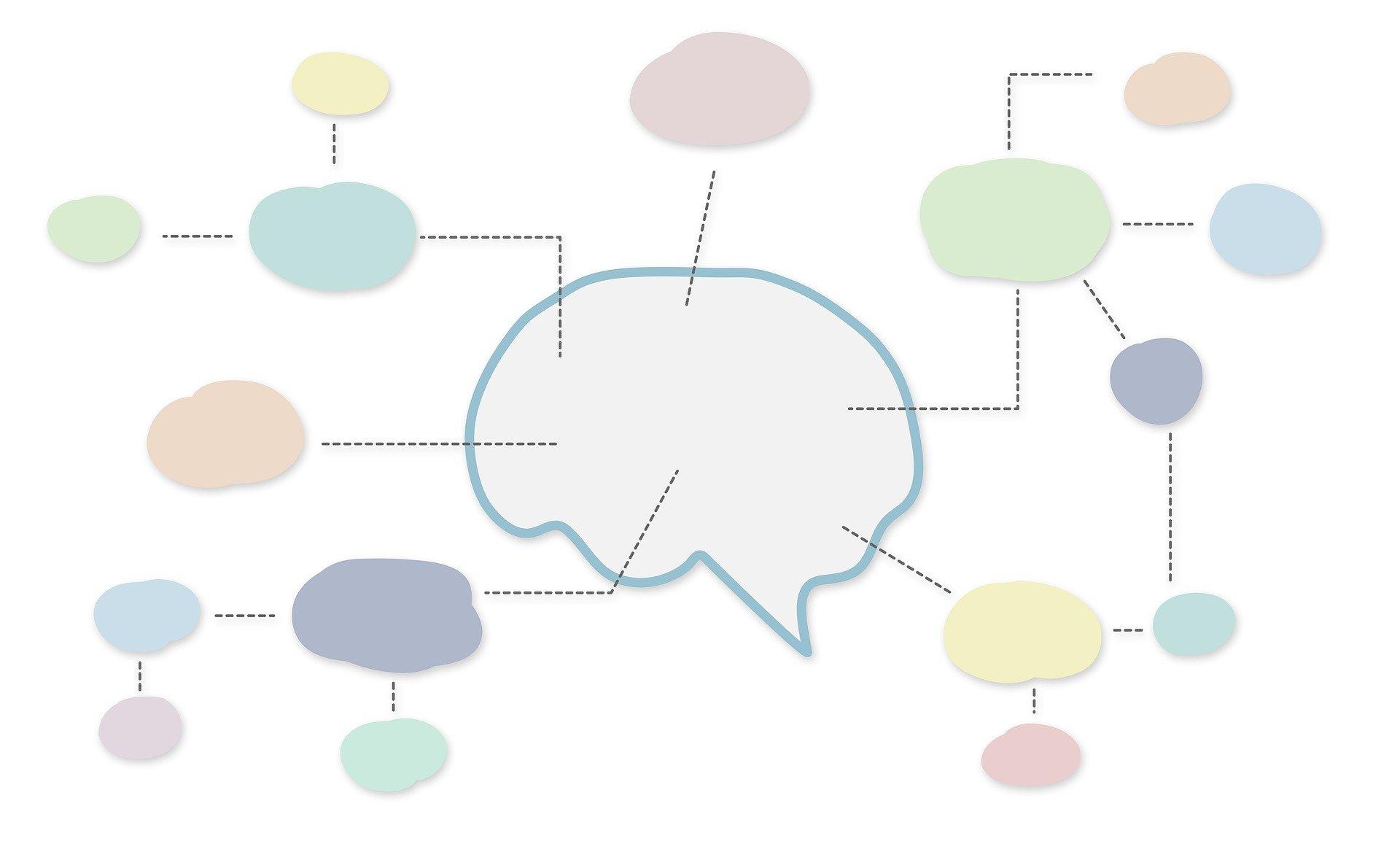What is time management?
The most specific definition of time management sounds like this:
Time management is the report, distribution, and operational planning of time resources.
Here's another definition.
Time management is the scientific approach to organizing time and increasing its effectiveness.
Here's a professional time manager's motto: Work less, do more!
People who are able to productively allocate their time live more fulfilled lives and do their jobs with minimal time spent.
By managing your own time, you have more availabilities. It will be come more possible to do what you really like to do.
Considering the rush modern people live in, the time management problem is becoming more and more relevant if not critical. A developed time management skill will increase your personal efficiency manifold.
Time management lets you organize your work and personal time in a day (week or month) to have time to do everything important and necessary while not getting distracted by secondary or tangential problems.
Professionals think that the amount of time gained from using time management techniques measures in the years or even decades.
Time management is made of several pieces.
These are:
- a strict time schedule
- optimization of time resources
- planning your day (week, month, or other time period)
- and organizing your motivation.
Time management is important for more than just work. People who embrace the art of time management are more satisfied, healthy, and successful in the personal and professional lives.
Effective time management lets you think about all your ideas and decisions from the point of view of their value in development and accomplishments.
Now let's look at what this is in practice and clarify how you can correctly manage your time, where you should start planning and managing your actions, what difficulties may occur and how you can overcome them. You'll find the main principles of time management below:
- Planning
- Motivation
- Concentration
- Completing tasks
- Saving time
- Rest
- Health
We will explore what techniques exist for the most productive planning in this article.
Principle 1. Planning your actions.
Planning an upcoming day (or upcoming week) has practical implications for any job. It's not important if you're sitting in an office, standing by a conveyor, or working in delivery in your time off from school. A clear plan of action will always bring real benefits by increasing your efficiency (personal or professional).
You should always have a plan made in advance. It will help you deal with work more efficiently and effectively.
Remember, all successful people plan their lives!
So, we'll discuss several techniques to improve productivity below.
1. Set goals correctly.
Strategic and effective planning is impossible without proper goals.
More simply, you should be able to clearly set your main goal and be able to split it into more specific, localized tasks.
In management theory, this skill is called "goal decomposition". The main way to use this in practice is transitioning from the general to the personal.
For example, you work in marketing and your main goal is to increase sales by 20% next quarter. This is a poorly designed task. It's hard to begin or even understand where to begin.
It's much better to split it into several subtasks. Increase sales in a specific market by holding advertising sales, review the value of this issue in several places, change the prices, hold a large-scale advertising campaign online and in the media, etc.
There is a professional tool (or principle) to make and set localized goals in time management and goal setting.
It's called the SMART principle.
According to this principle, a goal should be:
- Specific
- Measurable
- Attainable
- Relevant
- Time-bound
The main usefulness and effectiveness criterium of a localized task is its specificity. Starting to work on a large goal by completing successive tasks, you'll significantly decrease the amount of time to complete that task.
The successiveness and concentration on specific points is the key to future success.

2. Use the GTD (Getting Things Done) method.
This is a method to effectively allocate your time between important and necessary tasks by business trainer David Allen who wrote the book "Getting Things Done: The Art of Stress-Free Productivity".
Its main principles are as follows:
- Write all your tasks and ideas in one place called an Inbox.
- Periodically, sort through your Inbox and organize your tasks by priority and deadline. Place your notes in folders according to their contents: work, home, purchases, etc.
- Revise them. Throw away unneeded notes, cross out completed tasks, and put the no longer relevant tasks in an archive.
- When everything is planned, start completing your tasks. Tasks that can be done in just a few minutes should be done first. Others can be delegated or put in a calendar.
3. Zen to Done.
Leo Babauta is the author of the productivity blog Zenhabits. He thinks that David Allen's GTD system is very complex and requires too much effort. He suggests his own zen style system, Zen to Done. To follow it, you need to develop 10 simple habits.
- Gather all your information in an Inbox.
- Process all your notes and don't put them off forever.
- Plan your main goals for each day and the biggest ones for a week.
- Pay attention to one thing at a time without losing focus.
- Create short simple to-do lists.
- Organize your notes in categories depending on their contents as in GTD.
- Regularly look through your notes and remove the extra ones.
- Simplify. Make your goal and task lists shorter. Write succinctly.
- Maintain a specific schedule to get ready for work.
- Do what's interesting to you.
4. The Autofocus Productivity Method.
Autofocus was made by productivity expert Mark Forster. This planning system is good for creative people who find it difficult to follow GTD.
Write all your tasks in a notebook without any organization. Then look at the list and choose what you need to do ASAP and take care of them. When you're finished, go to what you love to do. If you didn't finish something, put it at the end of the list and come back later. Do this every day.
5. Don't confuse productivity and efficiency.
You can be always busy, but it doesn't many you're productive. Think about how useful your actions are, how they relate to your work and if they're in a plan that doesn't bring you closer to your goals. If they are, exclude them.
6. Use calendars instead of to-do lists.
Planning your tasks in a calendar will help you differentiate your plans to do something from what are keeping you from a task at a specific moment. This makes it easier to spread your tasks across a week or month and quickly find free time to change something in your plan.
7. Don't do several things simultaneously.
It's possible to do this, but many research papers have shown that multitasking decreases efficiency. You'll only feel satisfaction which doesn't last long and is replaced by burn out. Get used to doing tasks in a row and your effectiveness will only improve.
8. Set deadlines for yourself.
If you're used to putting things off to the last minute and then rushing through everything, set personal deadlines for yourself. For example, if your boss needs two reports from you by Friday, make yourself do one by Wednesday.
9. Set your priorities.
Timely and clearly setting your main goal is a necessity and is correct. But your main task is moving towards accomplishing a set goal by successively completing tasks of various difficulties.
There are various techniques for setting priorities.
- The ABCDE Method.
The ABCDE Method by Brian Tracy is excellent for daily planning. A is the more important, B is less important, C is of average importance, D is something that can be give to someone else, and E is an unimportant task whose completion affects nothing.
The first task in the list should be completed first. This is usually the most difficult and time-consuming task. Sometimes people are afraid or too lazy to start their day with their main goal and constantly say they'll do it "after lunch", in the evening or even tomorrow, but the secret is that the following actions' efficiency depends on completing it.
Brian Tracy calls this unpleasant complex tasks "frogs" which should be done independent of your desire. Do one such task at the start of your day. "Eat the frog". Then things will be easier. You'll get that load off your shoulders and put yourself in a better mood for the rest of the day.
- Pareto rule.
Another important technique is the Pareto rule: 20% of our effort brings us 80% of our results and the other 80% of our efforts only bring 20% of our results.
So, our task is to spend that very effective 20% on the most important tasks and concentrate on them.
- Eisenhower Matrix.
There's another tool for effectively planning your priorities called the "Eisenhower Matrix". The politician, general and US president Dwight D. Eisenhower was a practical and extremely successful man.
He came up with splitting daily tasks into four categories:
- important and urgent (Do First)
- important but not urgent (Schedule)
- urgent but not very important (Delegate)
- unimportant and not urgent (Don't Do).
The first category, important and urgent, has the primary goals that must be done today and right now. Setting them aside will only cause unneeded problems in the future. Giving them to other people isn't worth it. They should be done by you, immediately.
This sector is also called "Fire Sector" which can be fraught with unpleasant effects that could even hard your personal health.
The second category is important tasks that aren't urgent.
This is the most effective sector in the matrix. You can be calm here, plan, ponder and act properly and deliberately. You're doing what's really important here.
Try to not let important tasks slip into the urgent sector!
The third category is urgent but not very important. These tasks can take a lot of time if you start them immediately yourself. These are the tasks you can delegate.
Tasks in the fourth category (not urgent, unimportant) can be crossed off your daily list. These tasks are a purposeless waste of time.
You can make a table like this based on Dwight D. Eisenhower's "Matrix" every day.

10. Limit your list of important tasks to three.
Don't try to cram only difficult tasks into your day's schedule. That's not far from getting exhausted or professionally burned out. Then you won't have to worry about productivity. Don't tackle more than three large tasks a day. Alternate doing them with simple tasks and find time to relax.
11. Spend an hour a day on non-urgent tasks.
Getting bogged down in a routine of daily, urgent tasks and endlessly setting aside other important non-urgent tasks is quite easy. But you might never get around to them that way. Don't hope that you'll have a day with more time. If you want to finish a book, set aside reading time every day. If you're dreaming of learning a language, study every day.
12. The 1-3-5 rule.
The idea is as follows: in a day, you can only do one large task, three medium ones, and five small ones. That's nine tasks in all, no more, no less. This rule will help you gradually remove obstacles, finish tasks on time and not get overwhelmed.
13. The rule of threes.
If you can't do three tasks a day, Chris Bailey, author of "My productive year" created the rule of threes. It proposes that you only need to do the three most important tasks a day to be productive.
Instead of spreading your energy and attention on a few dozen points in a check list, just choose the three most important ones a day and focus on them. Pick the next most three tomorrow and so on. This way you'll preserve your concentration. This rule can also be used to set goals for a week, month, or year.
14. Spend seven minutes on planning.
According to the principle proposed by Allyson Lewis, you need to spend 1% of your life on planning:
- 7 minutes in the morning to plan your day,
- 7 minutes in the evening to analyze the day and plan tomorrow.
Using 14 minutes to organize your day, you can significantly improve your daily effectiveness.
15. Fresh or Friend method.
This philosophy was made by blogger Stephanie Lee. According to her, when you wake up in the morning, your brain is "fresh" but gets "fried" throughout the day. This means you should determine your peak productivity time and do the most important things in that time period. This is how it works.
- At the end of the day when you're tired, spend 15 minutes to make a to-do list for tomorrow.
- Move the most important things to the top in the Fresh section. Those should be the things you don't like, the "frogs". You need to do them while you still have energy.
- The less urgent, but not very complex and more pleasant tasks should be in the Fried section, the second half of the day depending on your schedule. They will be less mentally taxing.
- Follow your list in the morning. And make a new one in the evening.
Stephanie recommends FoF to those who discover they're absolutely drained in the evening but didn't get anything done even though they worked all day.
16. The Japanese productivity method Kanban.
It helps monitor what you're doing, what you've done, and what you need to do. Kanban clearly visualizes the work process.
Get a board for stickers (or register on a managing website like Trello) and draw three columns: To do, Doing, Done. Then, write your tasks on stickers and put them in the corresponding columns depending on if you're doing them or have already done them.
17. Ivy Lee's system.
This system of achieving maximum productivity works as follows:
- At the end of the workday, write down the six most important things that you'll need to do tomorrow. Don't exceed six.
- Put them in order of importance.
- At the beginning of every workday, concentrate on the first point. Do it from start to finish and only then move on to the next point.
- Do this with all the tasks on the list. At the end of the day, move the unfinished tasks to a new list of six goals for tomorrow.
- Repeat this process every day.
18. Dave Lee's system.
This is an alternative GTD system created specially for creative people. Lee thinks that creative people have too long, complex to-do lists and overtime the GTD method stops working for them. The task management system is overloaded and causes nothing but stress. Lee proposes his own method that includes the following processes:
- Pick the five most important focuses with one per day of the week.
- Determine three desired results for the week.
- Pick three desired results per day. All three should be connected with the day's focus.
- Work in 25-minute focused sessions and take breaks between sessions. (Pomodoro method)
- Organize every day's focus like a separate project.
- Each project should have the minimum amount of information. Don't fill each project with a ton of tasks and notes.
- Store information that isn't critical in another place.
- Set priorities for each day in the chosen focus. At the end of the day, work on other less important areas.
- Keep your workplace clean.
19. Gantt Chart.
You can use this method to make your plan clearer and more specific. Grant's chart shows all the tasks of the current large project with its deadlines, time required and order of completion.

Similar tasks can be grouped in one spot and larger tasks can be broken into several successive tasks.
A clear plan saves your time as well as lets other coworkers taking part in the project to quickly understand the tasks and get involved where necessary.
20. Bullet journal is a way to keep a journal.
You can use it for whatever you want since you make it yourself. The system's creator is Ryder Carroll.
So, you'll need a notebook that will have all of your to-do lists, notes, plans and other important documents. Your Bullet Journal should have no clear categories, prior-made pages, or rules. This system is very flexible. There's only two rules:
- Your Bullet Journal should have a so-called index. It's a table of contents in the beginning that well help you easily find the needed notes.
- The pages should be numbered otherwise the index is useless.
You can see many videos on YouTube on how to make a Bullet Journal. We want to note that it's an unbelievably amazing and universal tool that can easily meet any needs and is easy to use. You can use it to organize anything in your life.
21. Try making a mental map.
The idea of a mental map comes from observing that we can develop any idea practically endlessly in all directions.
When thinking, we push away from some kind of basic, key, or fundamental issue that is the central theme. This theme should be clearly defined and focused.
A key idea creates several new ones, each of with in its own way develops and is concentrated in smaller ones. The connections between ideas are shown with lines.
Don't make more than four levels. Otherwise your map will be hard to read.
This all happens incrementally, so your idea map is good. You won't look for the correct place to write something. Just put the idea somewhere near the central theme.
You can determine your ideas' places later.
Mind mapping lets you visualize the planning process and makes it simpler and clearer.

Remember, that those few minutes you spend on planning will provide interest in the future. The results of correct planning will be appreciated in the first week of implementation.
